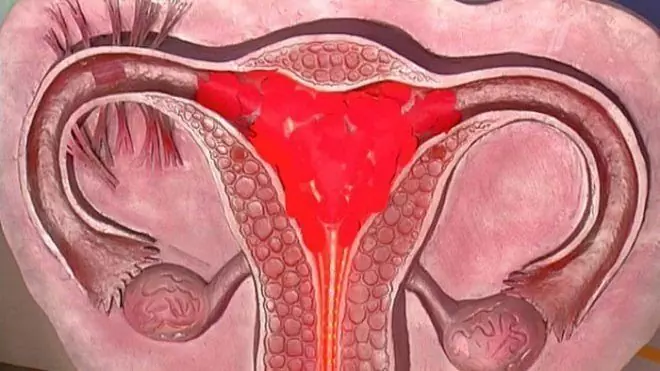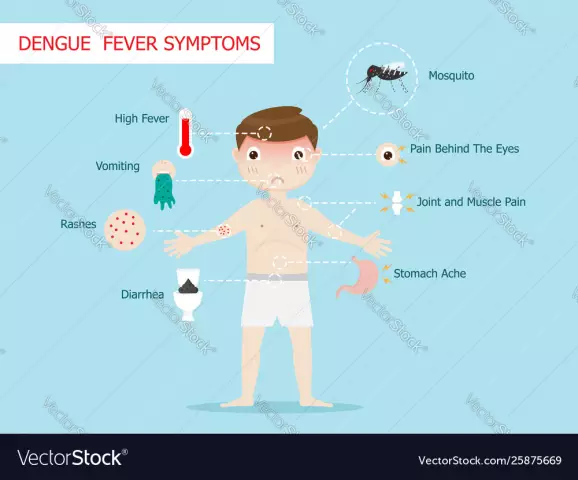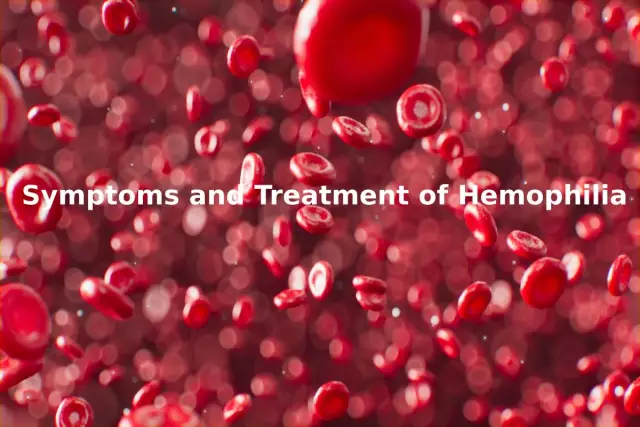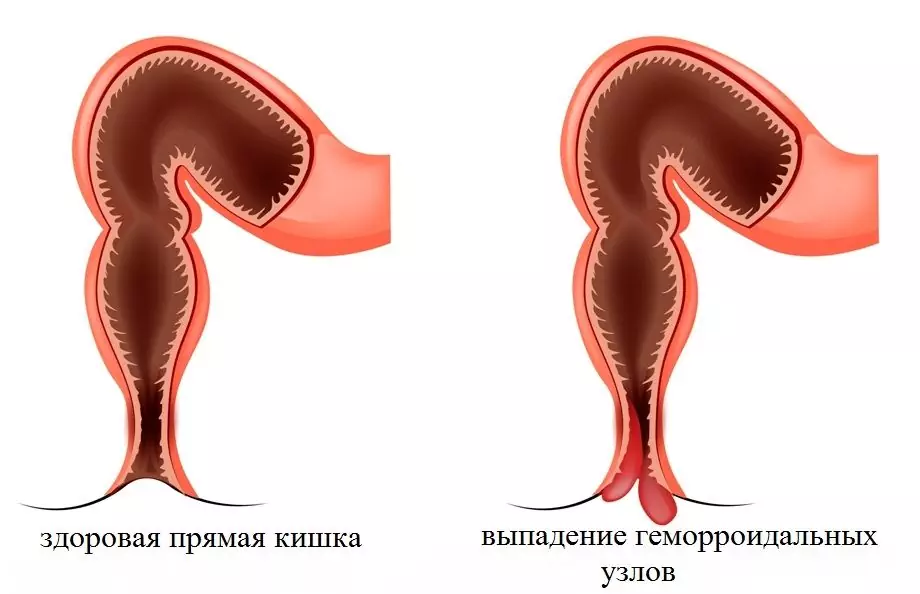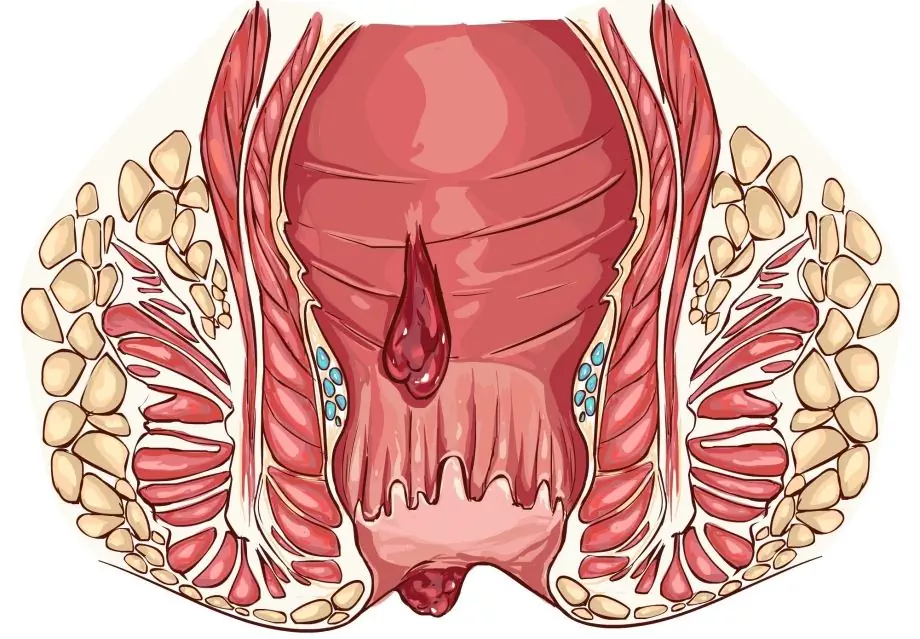Diseases
Last modified: 2025-11-02 20:11
Spinal hemangioma is a widespread benign neoplasm of the spine of vascular origin
Last modified: 2025-11-02 20:11
Hemangioma in newborns is a benign neoplasm that forms from small and medium-sized blood vessels
Last modified: 2025-11-02 20:11
Hematoma is a type of bruising, accumulation of blood in case of damage to organs and tissues with rupture of blood vessels. The need and choice of tactics for treating hematomas is determined by specialists
Last modified: 2025-11-02 20:11
Hematometer - an accumulation of blood in the uterine cavity, resulting from a violation of its outflow. It can develop after abortion, childbirth, or intrauterine manipulation
Last modified: 2025-11-02 20:11
Hemiplegia is a neurological syndrome characterized by a complete lack of motor activity of the upper and lower extremities of the right or left side, often with the involvement of the muscles of the trunk and face on the affected side
Last modified: 2025-11-02 20:11
Hemorrhagic fever - infectious diseases characterized by toxic damage to the walls of blood vessels and the development of hemorrhagic syndrome
Last modified: 2025-11-02 20:11
Hemarthrosis of the knee joint is an accumulation of blood in its cavity. In the absence of treatment, it can be complicated by aseptic or purulent arthritis, deforming osteoarthritis
Last modified: 2025-11-02 20:11
Hemorrhagic vasculitis is an aseptic inflammation of microvessels. Usually occurs with a respiratory tract infection
Last modified: 2025-11-02 20:11
Hemorrhagic diathesis is a group of diseases characterized by an increased tendency of the body to bleeding and hemorrhage. Treatment depends on the type and type of diathesis, as well as on the mechanism of bleeding
Last modified: 2025-11-02 20:11
Hemiparesis is a condition in which partial paralysis or muscle weakness occurs in one side of the body
Last modified: 2025-11-02 20:11
The main danger of hemorrhoids lies in the specific location of the disease, and the symptoms hidden from the eyes are of a mild nature. Hemorrhoids have two main types: internal hemorrhoids and external
Last modified: 2025-11-02 20:11
Hemorrhagic syndrome is a tendency to cutaneous hemorrhage and bleeding of the mucous membranes. Quite often, this syndrome is a sign of hemophilia
Last modified: 2025-11-02 20:11
Hemolytic anemia is a group of blood diseases united by the accelerated destruction of red blood cells. Their signs: anemic syndrome, enlarged spleen, jaundice
Last modified: 2025-11-02 20:11
Hemorrhagic stroke is a disease associated with hemorrhage in the brain or under its membranes and leading to very serious consequences
Last modified: 2025-11-02 20:11
Hemorrhoids during pregnancy is one of the most common pathologies, which is caused by the increasing pressure of the enlarging uterus on the inferior vena cava
Last modified: 2025-11-02 20:11
The tendency of the human body to prolonged hemorrhage and bleeding is called. There is no cure for hemophilia that permanently relieves the patient from the disease
Last modified: 2025-11-02 20:11
Hemorrhoids in men is a common proctological disease that is caused by pathological changes in the veins of the rectum
Last modified: 2025-11-02 20:11
Hemosiderosis is a disease belonging to the group of pigmentary dystrophies. It is characterized by the accumulation in the tissues of the body of an excess amount of hemosiderin - an iron-containing pigment
Last modified: 2025-11-02 20:11
Hemothorax - an accumulation of blood in the pleural cavity (from ancient Greek αíμα - "blood" and θώραξ - "chest")
Last modified: 2025-11-02 20:11
There is no mass vaccination against hemophilic infection in our country. Haemophilus influenzae is dangerous enough for parents to think about their child's health and purchase the vaccine on their own
Last modified: 2025-11-02 20:11
Hemorrhoids in women - a common disease of the vascular structures of the rectum, consisting in a change in the hemorrhoidal plexus and the formation of nodes
Last modified: 2025-11-02 20:11
Hemophthalmus is a hemorrhage in the vitreous humor of the eye, dangerous with unpredictable complications
Last modified: 2025-11-02 20:11
Hemochromatosis is a hereditary disease characterized by a violation of iron metabolism, as a result of which there is an excessive accumulation of this element in the tissues of the body (more than 20 g at a rate of 3-4 g). The name of the nosological form reflects the most characteristic feature of this disease - intense staining of the skin and internal organs
Last modified: 2025-11-02 20:11
Hemophilic infections are a group of acute infectious diseases, the causative agent of which is Pfeiffer's bacillus (Haemophilus influenzae, Haemophilus influenzae) and which are characterized by a predominant lesion of the respiratory system, the brain, the formation of abscesses in the internal organs
Last modified: 2025-11-02 20:11
Generalized anxiety disorder is a condition of a person who experiences excessive feelings of anxiety and anxiety on a daily basis
Last modified: 2025-11-02 20:11
Genital herpes is a viral disease characterized by a specific rash of vesicles on the mucous membranes of the genitals. Antiviral drugs are used in the treatment of genital herpes
Last modified: 2025-11-02 20:11
Geographic tongue is the result of the formation of foci of epithelial desquamation and dystrophic changes in the papillae of the mucous membrane of the tongue
Last modified: 2025-11-02 20:11
Hepatomegaly - a disease characterized by an increase in the size of the human liver
Last modified: 2025-11-02 20:11
In terms of the severity of the pathologies that various diseases cause in the fetus, the second place is taken by the herpes virus in pregnant women. Herpes treatment consists of antiviral therapy
Last modified: 2025-11-02 20:11
Hepatosplenomegaly is a combined significant increase in the liver and spleen, characteristic of a number of diseases
Last modified: 2025-11-02 20:11
Hepatitis D is an acute or chronic infection of the liver with a parenteral mechanism of infection caused by the hepatitis D virus (HDV, HDV)
Last modified: 2025-11-02 20:11
Dermatitis herpetiformis - a disease characterized by inflammation of the skin and mucous membrane of the mouth
Last modified: 2025-11-02 20:11
Hepatitis B (serum hepatitis) is a viral liver disease in which the death of hepatocytes occurs due to autoimmune mechanisms. As a result, the detoxification and synthetic functions of the liver are impaired
Last modified: 2025-11-02 20:11
Herpes in children is a common pathology. Rashes can be located on the body, lips, throat. A herpes infection of newborns is isolated in a separate form
Last modified: 2025-11-02 20:11
Herpetic sore throat (vesicular pharyngitis, aphthous pharyngitis, ulcerous sore throat) is an acute infectious disease of a viral nature, occurring with a significant increase in body temperature, pharyngitis, dysphagia. A characteristic sign is the presence on the mucous membrane of the soft palate and the posterior pharyngeal wall of small fluid-filled vesicles (vesicles), prone to ulceration with the formation of erosion
Last modified: 2025-11-02 20:11
Hepatitis A (Botkin's disease) is an acute infectious viral liver disease with a benign course, which belongs to the group of intestinal infections. The disease is widespread in developing countries. This is due to the large overcrowding of the population and poor sanitary and hygienic living conditions
Last modified: 2025-11-02 20:11
Hepatosis is a group of non-inflammatory liver diseases, the development of which is caused by hereditary or exogenous factors. They are characterized by atrophy of hepatocytes and impaired metabolic processes in the liver
Last modified: 2025-11-02 20:11
Herpetic sore throat in children is an enteroviral lesion of the palatine tonsils and pharynx with the formation of vesicles, ulcers and erosions
Last modified: 2025-11-02 20:11
Herpetic stomatitis is a viral disease that manifests itself in characteristic bubbles on the mucous membrane of the mouth
Last modified: 2025-11-02 20:11
A hygroma is a tumor-like formation (cyst) under the skin in the form of a cavity filled with fluid. For small sizes, treatment is carried out using paraffin and mud applications, physiotherapy procedures




